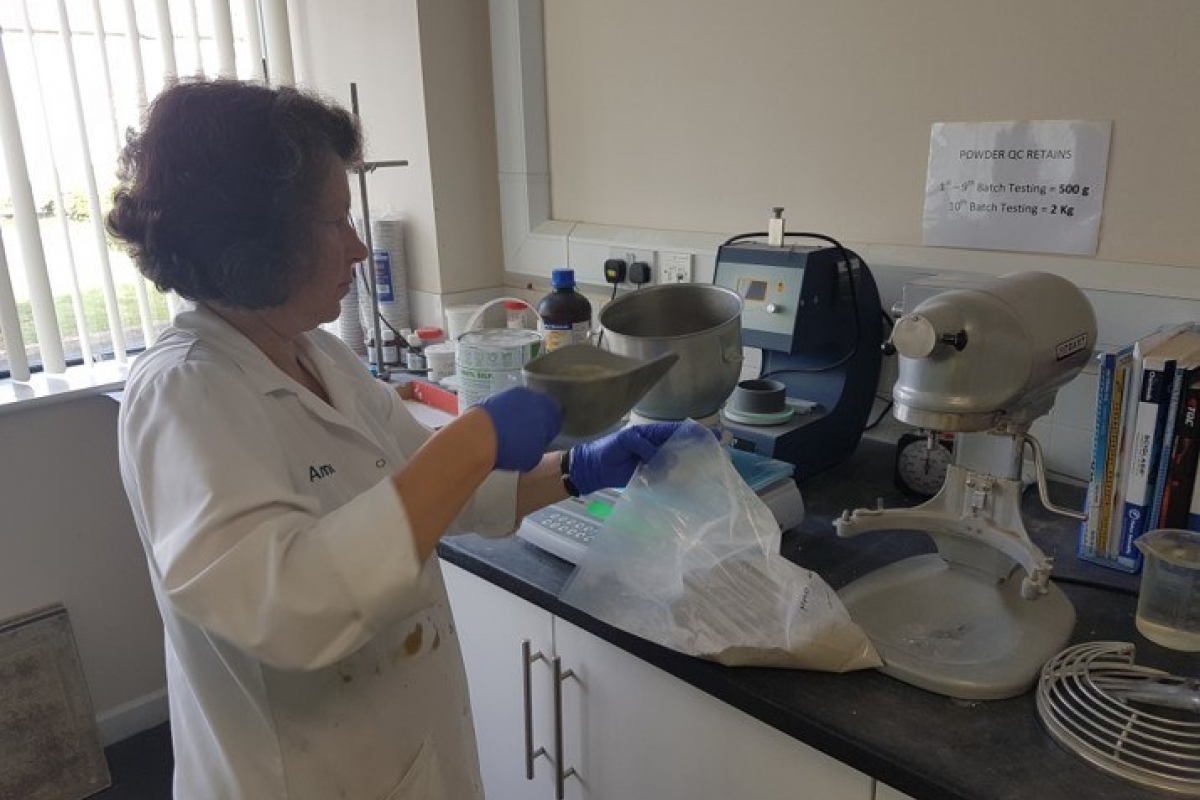Posted on 25/9/17 in Articles

The laboratory has a very important role to play at Wykamol Head Office. Our resident Chemists, have an array of responsibilities which require exceptional analytics skills and attention to detail.
One of these procedures is batch testing the products we manufacture. Andrew Latimer, Technical Manager, was lucky enough to get an insight into a typical day in the lab.
During his visit he saw batch testing one of our most popular products, Renovation Plaster.
Batch testing ensures quality control, allowing the lab to confirm that every bag of Renovation Plaster is formulated to a high standard and performs equally well across the board.
A retain sample is taken from every single batch of Renovation Plaster the factory produces, which is bagged, dated and held in reserve for future reference. A second sample is then used to test for quality assurance.
The Renovation Plaster and water are added to a Hobart mixing bowl at a ratio of 2:1 and mixed for a total of 1 minute 30 seconds, increasing the speed after 1 minute.
The mixture is applied to a flow table to test for the natural spread of the batch. In the images, we can see the adding the mixture to a truncated conical mould on the flow table and compacting it to ensure uniform mould filling. The mould is then removed.
Then, a manual handle on the flow table is turned, causing it to both rotate and move up and down, this allowing the mixture to spread. The spread is then measured and recorded.
The mixture is then transferred to a cylindrical bowl and compacted to ensure uniform filling. A palette knife is used to skim off any excess mix. The mixture is then weighed and the results recorded.
Testing for workability and density is completed with every single batch of Renovation Plaster. That’s approximately 10 batch tests every two weeks. However, every 10th batch undergoes even more extensive testing across a period of 28 days, to check the compressive and flexural strength.
This is merely the testing procedure for Renovation Plaster, and a glance at our wide-ranging product catalogue will soon portray how much time and effort we put into batch testing and quality control.
We feel our state of the art laboratory facilities give us the edge on other UK based manufacturers, as it allows for the continuous research and development of products to an exceptionally high standard.